Limited Edition
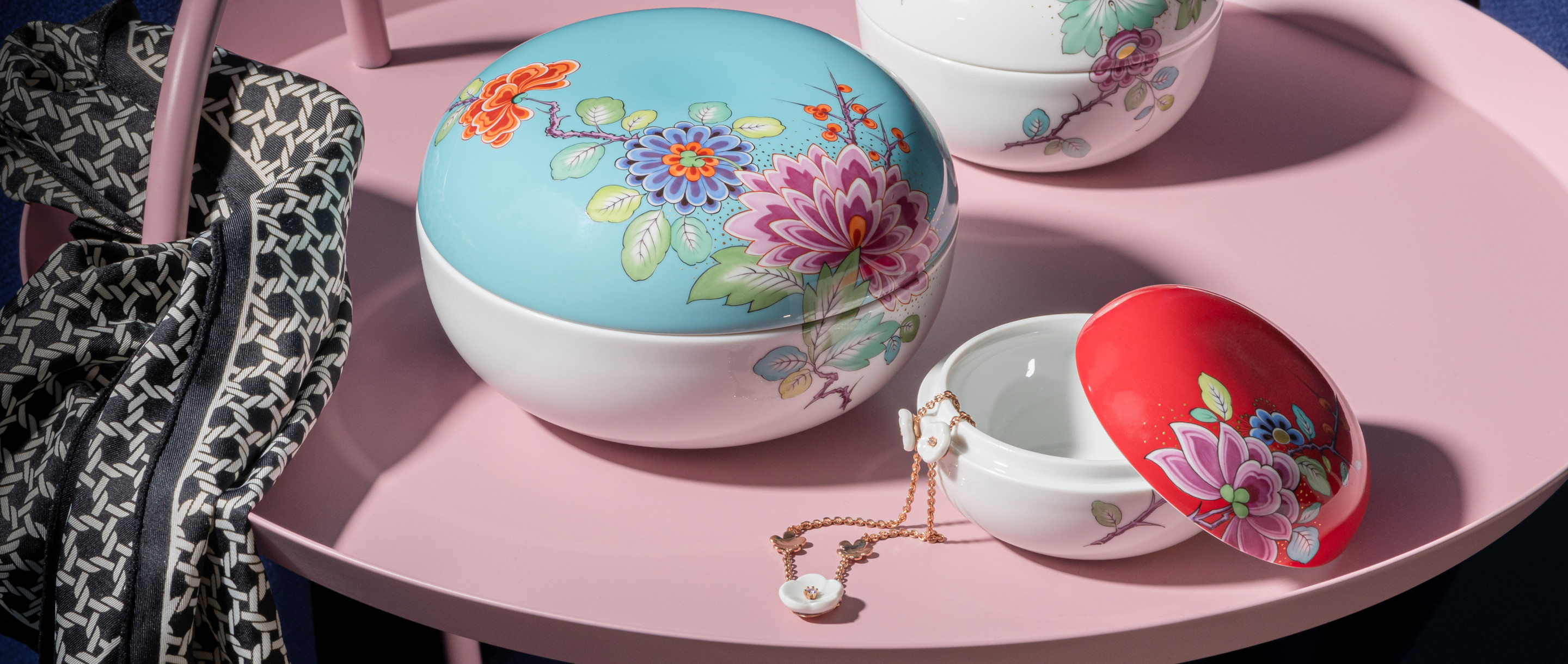
From mould production to modelling all the way to painting, glazing, and firing – every piece of Meissen porcelain undergoes a creative process that is only made possible by the great wealth of experience collected by the artisans of the Meissen manufactory. Their expertise keeps traditional production methods alive while at the same time creating new and innovative modern styles – both for reproductions of classic works or for historically influenced works of art created by contemporary Meissen artists. The new “Limited Edition” collection pays homage to the skills that have written Meissen’s story for more than 300 years and continue to do so today. The annual collection’s inspiration is Meissen’s own rich heritage – the manufactory’s wide array of designs and colours. In this way, the pieces embody not only the artists’ passions for a centuries-old craft, but also the practically limitless inspiration that shapes the manufactory’s history. Due to the limited nature of the collection, every single piece instantly becomes a valuable collector’s item.
“The new ‘Limited Edition’ series honours the extraordinary skill of Meissen’s artisans, who reinterpret the manufactory’s history over and over again.”
-
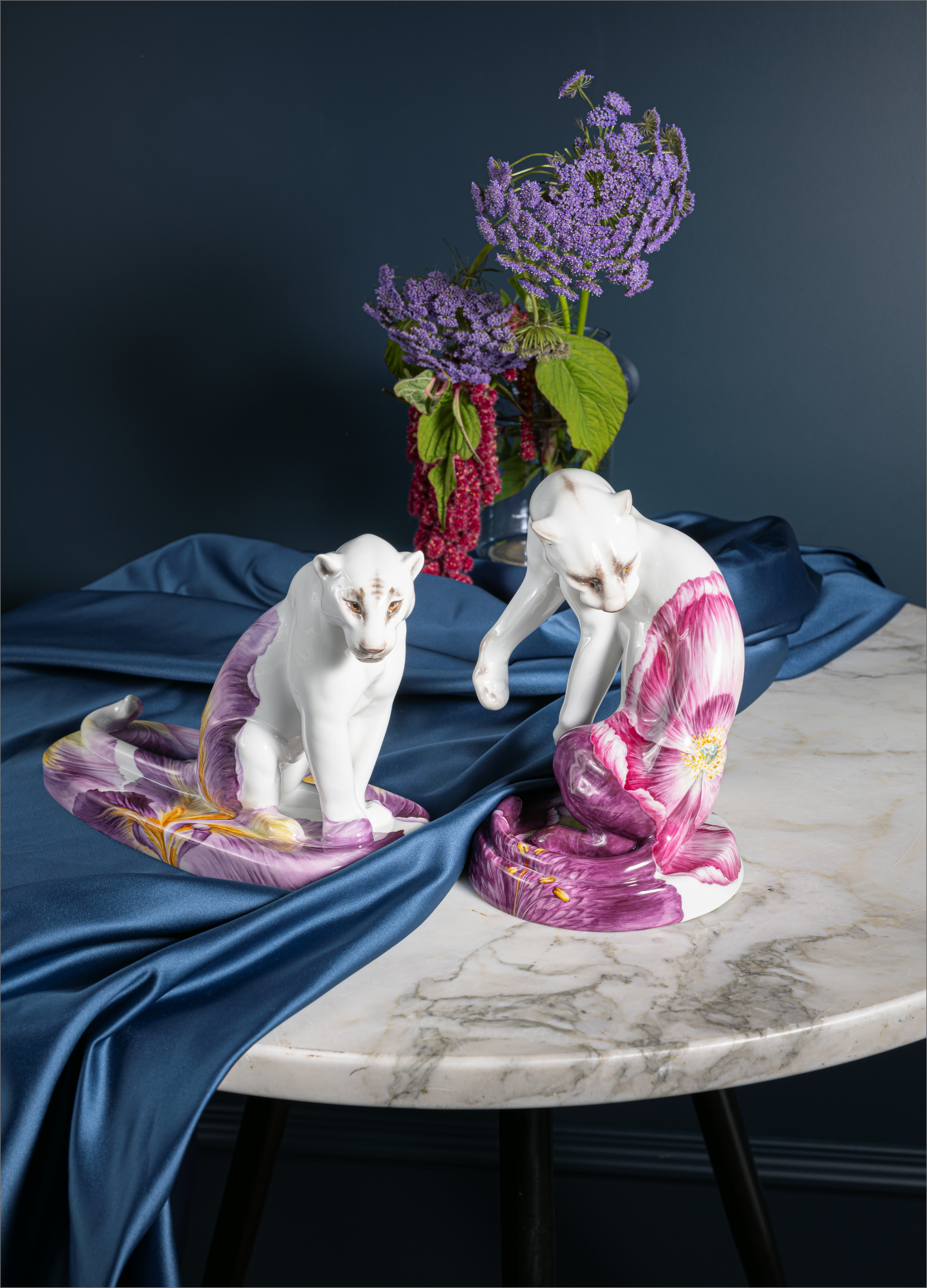 “Giant Bloom” PantherIntricate veins and shading on the petals, ultrafine pollen within the calyx – these are natural details of a flower that cannot be detected by the naked eye alone: close-ups of larger-than-life flower-heads in a stylised, at times abstract, form in which large patches of colour interact with an area in the white to exude a sense of inspirational clean-lined modernity. Having first been applied to a floor vase and other works of art by MEISSEN artist Lena Hensel, the pattern has now been extended to two vibrant models of panthers. They nestle against and envelop their feline hosts. The interplay of colours so typical of the pattern is what has been focused on here, too: shades of lilac and purple are augmented by various nuances of yellow.
“Giant Bloom” PantherIntricate veins and shading on the petals, ultrafine pollen within the calyx – these are natural details of a flower that cannot be detected by the naked eye alone: close-ups of larger-than-life flower-heads in a stylised, at times abstract, form in which large patches of colour interact with an area in the white to exude a sense of inspirational clean-lined modernity. Having first been applied to a floor vase and other works of art by MEISSEN artist Lena Hensel, the pattern has now been extended to two vibrant models of panthers. They nestle against and envelop their feline hosts. The interplay of colours so typical of the pattern is what has been focused on here, too: shades of lilac and purple are augmented by various nuances of yellow. -
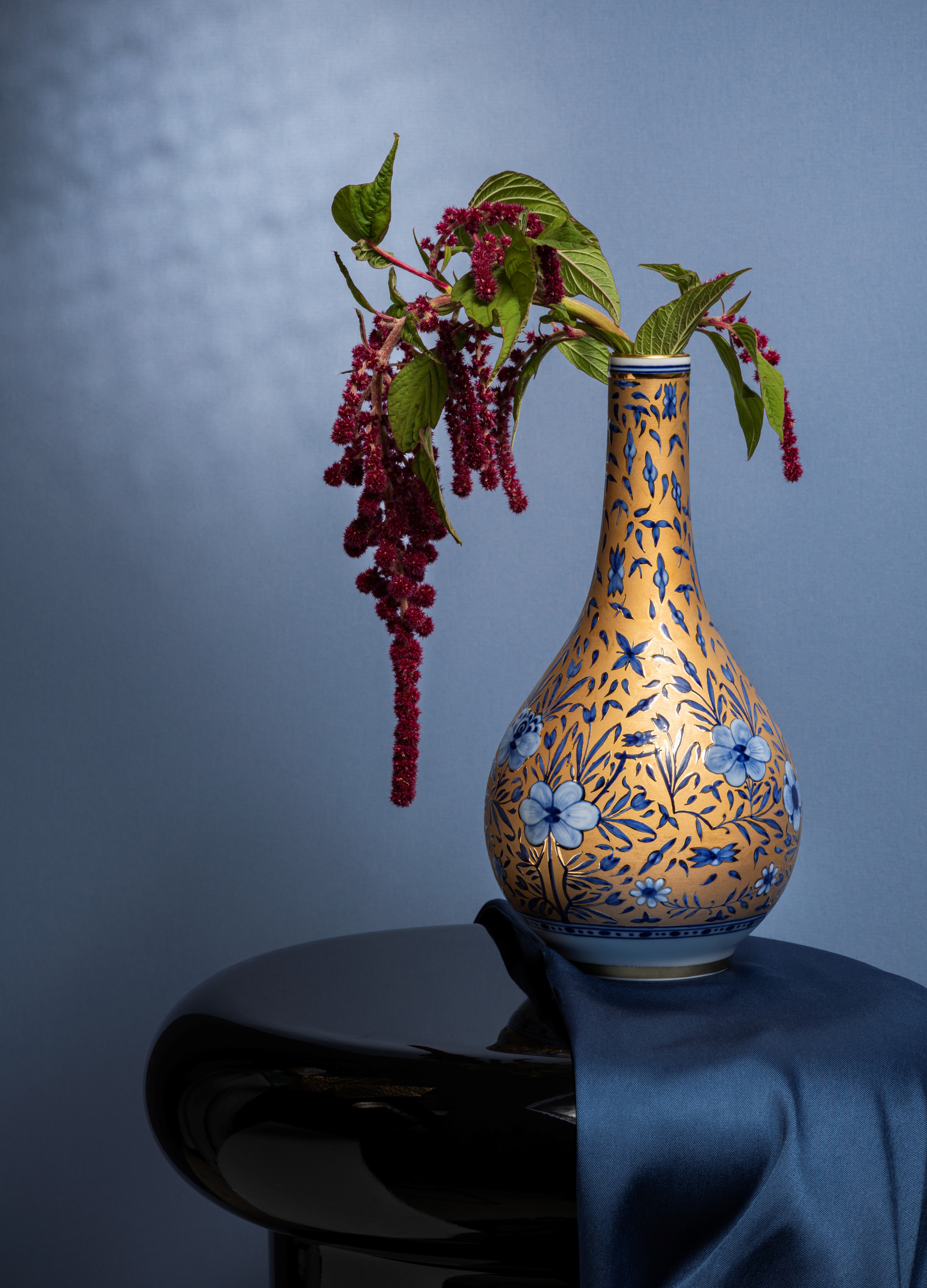 „Floral“ Bottle VaseThis art piece in the form of an early Chinese water bottle is very symptomatic of those fledgling years. Superb pattern of flowers and leaves are scattered with rhythmic regularity over the vase’s shapely body after consulting graphic sources in the manufactory’s own archives. The flowers are painted onto the as yet unglazed, absorbent porcelain in cobalt blue that immediately sinks into the unfired body. The colour only acquires its full intensity once it has been glost-fired, whereupon its initially rather greyish hue is transformed into the brilliant cobalt blue that is also used for the Crossed Swords, the trademark by which the Manufactory is instantly recognisable the world over. Contrasting most exquisitely with Mehner’s blue-and-white scheme is a new style of painting in gilt in which 24-carat gold is applied to the fired-but-unglazed “biscuit” surface and takes on a matt appearance once it has itself been fired.
„Floral“ Bottle VaseThis art piece in the form of an early Chinese water bottle is very symptomatic of those fledgling years. Superb pattern of flowers and leaves are scattered with rhythmic regularity over the vase’s shapely body after consulting graphic sources in the manufactory’s own archives. The flowers are painted onto the as yet unglazed, absorbent porcelain in cobalt blue that immediately sinks into the unfired body. The colour only acquires its full intensity once it has been glost-fired, whereupon its initially rather greyish hue is transformed into the brilliant cobalt blue that is also used for the Crossed Swords, the trademark by which the Manufactory is instantly recognisable the world over. Contrasting most exquisitely with Mehner’s blue-and-white scheme is a new style of painting in gilt in which 24-carat gold is applied to the fired-but-unglazed “biscuit” surface and takes on a matt appearance once it has itself been fired. -
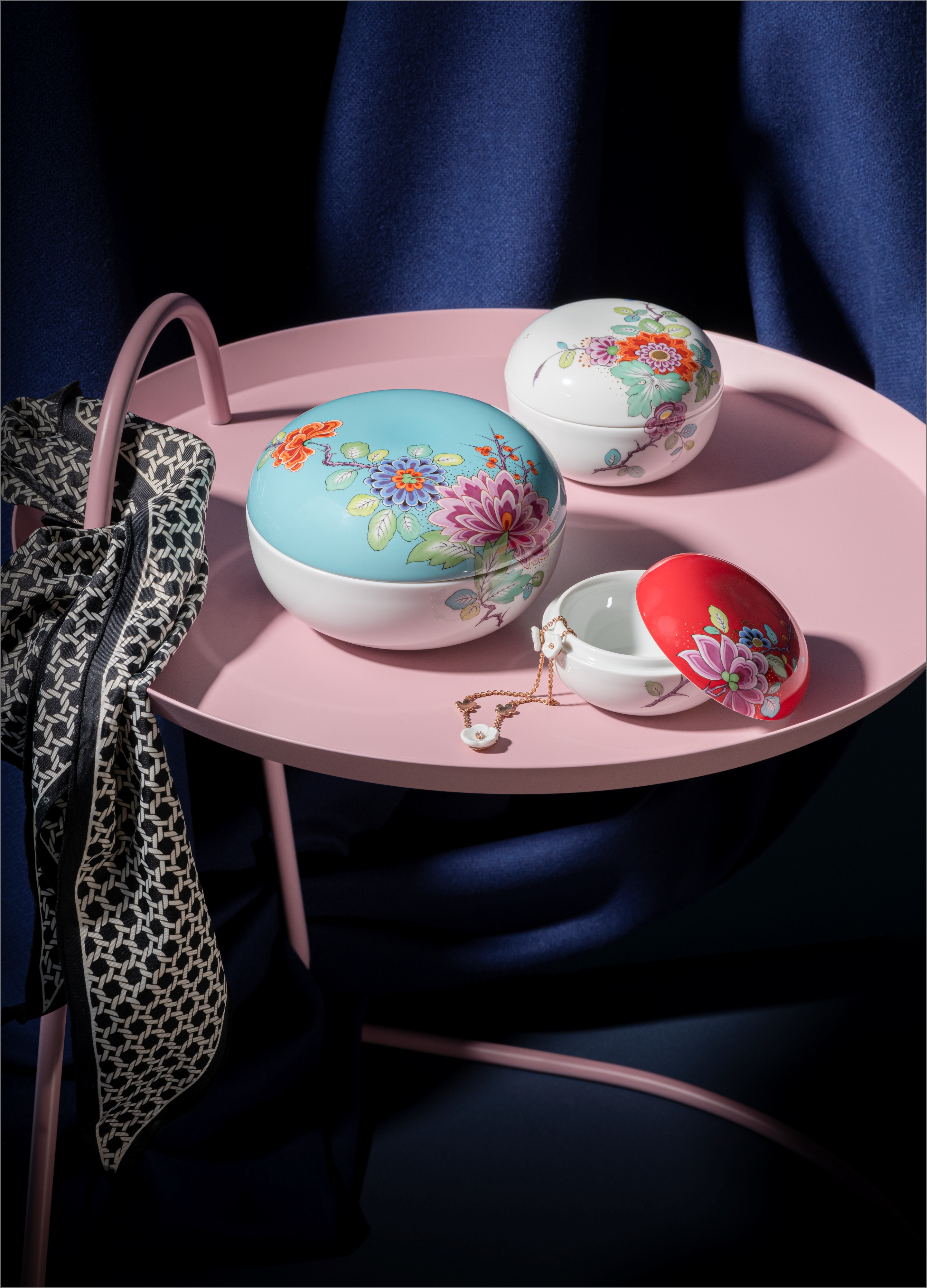 Set of boxes with indianisch flower paintingAristocratic circles in early 18th-century Europe regarded porcelain art from the Far East as constituting the most collectible material of all. Anyone intent on showing off their influence und wealth surrounded themselves with precious items shipped to Europe from China and Japan via trading posts run by the East Indies Companies. Augustus the Strong had a particular liking for the exotic “indianisch” floral ¬motifs in his huge collection. Meissen’s porcelain painters used these as prototypes once Höroldt had perfected an initial range of enamel colours – and proceeded to produce work of an intensity and brilliance which far outshone those of the originals.
Set of boxes with indianisch flower paintingAristocratic circles in early 18th-century Europe regarded porcelain art from the Far East as constituting the most collectible material of all. Anyone intent on showing off their influence und wealth surrounded themselves with precious items shipped to Europe from China and Japan via trading posts run by the East Indies Companies. Augustus the Strong had a particular liking for the exotic “indianisch” floral ¬motifs in his huge collection. Meissen’s porcelain painters used these as prototypes once Höroldt had perfected an initial range of enamel colours – and proceeded to produce work of an intensity and brilliance which far outshone those of the originals. -
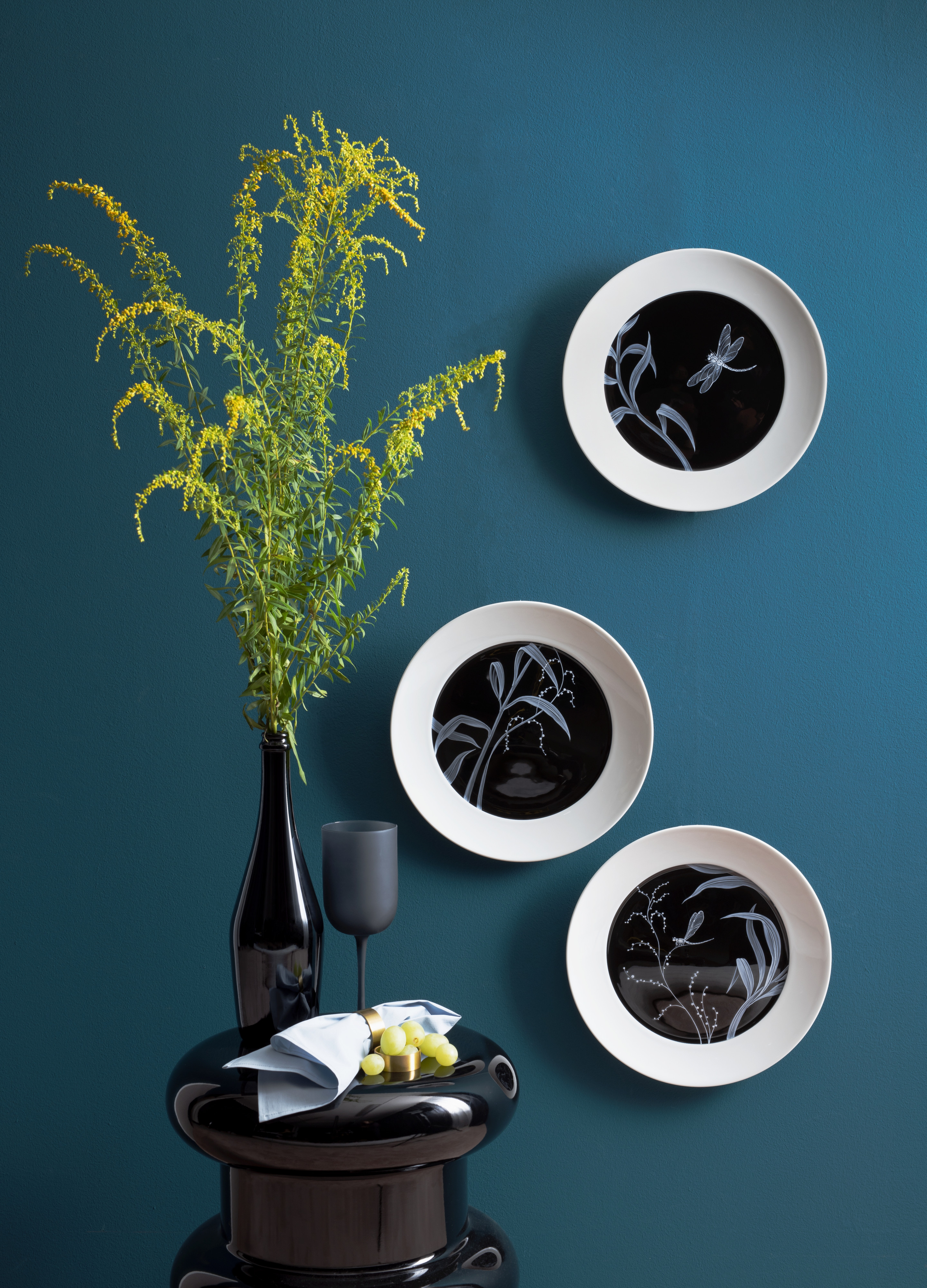 Wall plate with Limoges-style painting of “Grasses and Dragonflies”“Grasses and Dragonflies” is a modern triptych that revives the traditional method of Limoges painting in a breezy contemporary manner. The three plates are each decorated with different eelgrass motifs that work well both together and alone. With a steady hand the nature motifs are build up through the application of multiple layers of white porcelain paint to a black-glazed ground. Where applied fewer layers of colour, the resultant images were virtually translucent; the way they contrast with their dark background gives rise to a captivating sense of depth whilst also evoking the atmosphere of a moonlit night.
Wall plate with Limoges-style painting of “Grasses and Dragonflies”“Grasses and Dragonflies” is a modern triptych that revives the traditional method of Limoges painting in a breezy contemporary manner. The three plates are each decorated with different eelgrass motifs that work well both together and alone. With a steady hand the nature motifs are build up through the application of multiple layers of white porcelain paint to a black-glazed ground. Where applied fewer layers of colour, the resultant images were virtually translucent; the way they contrast with their dark background gives rise to a captivating sense of depth whilst also evoking the atmosphere of a moonlit night.
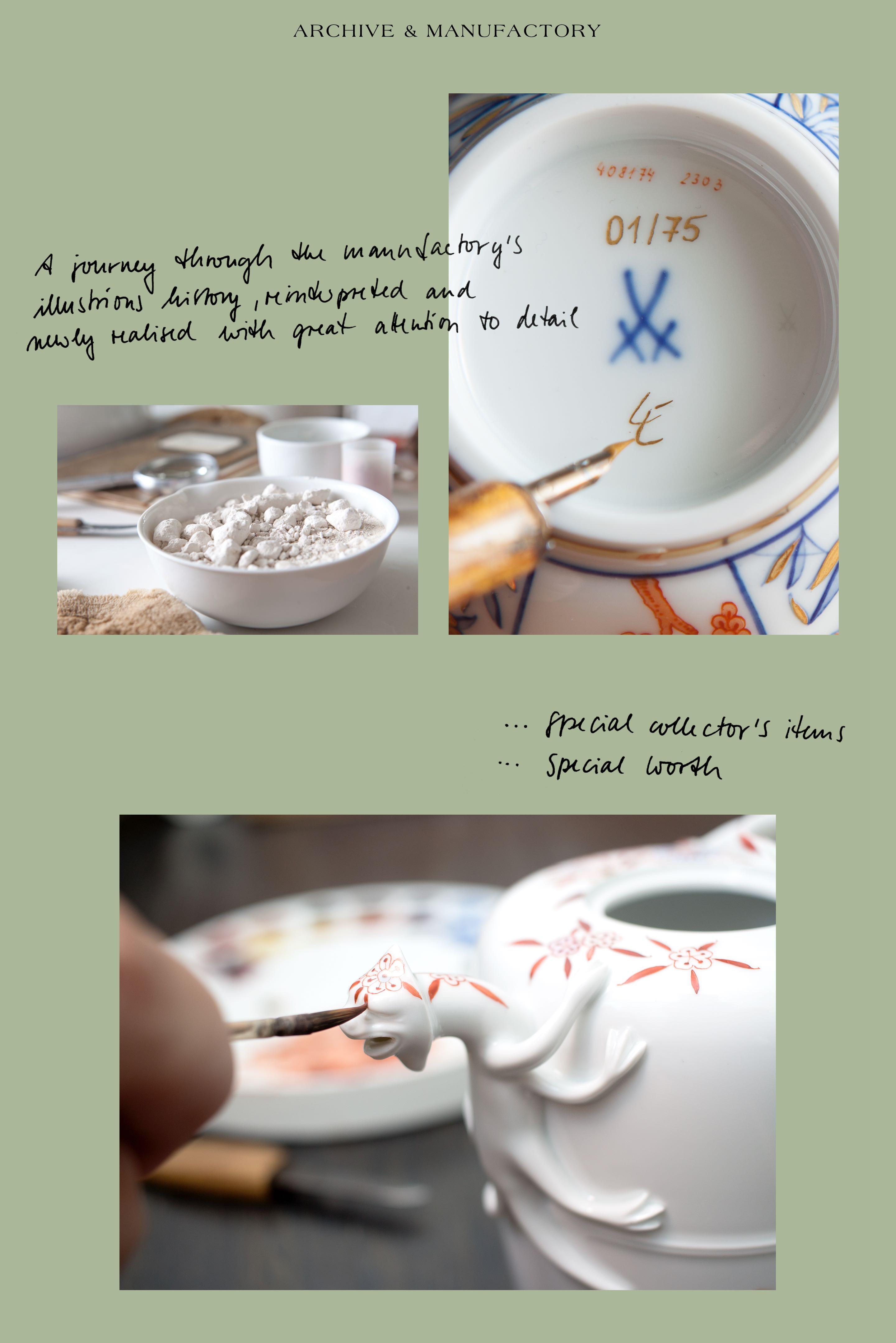
Campaigns
-
01
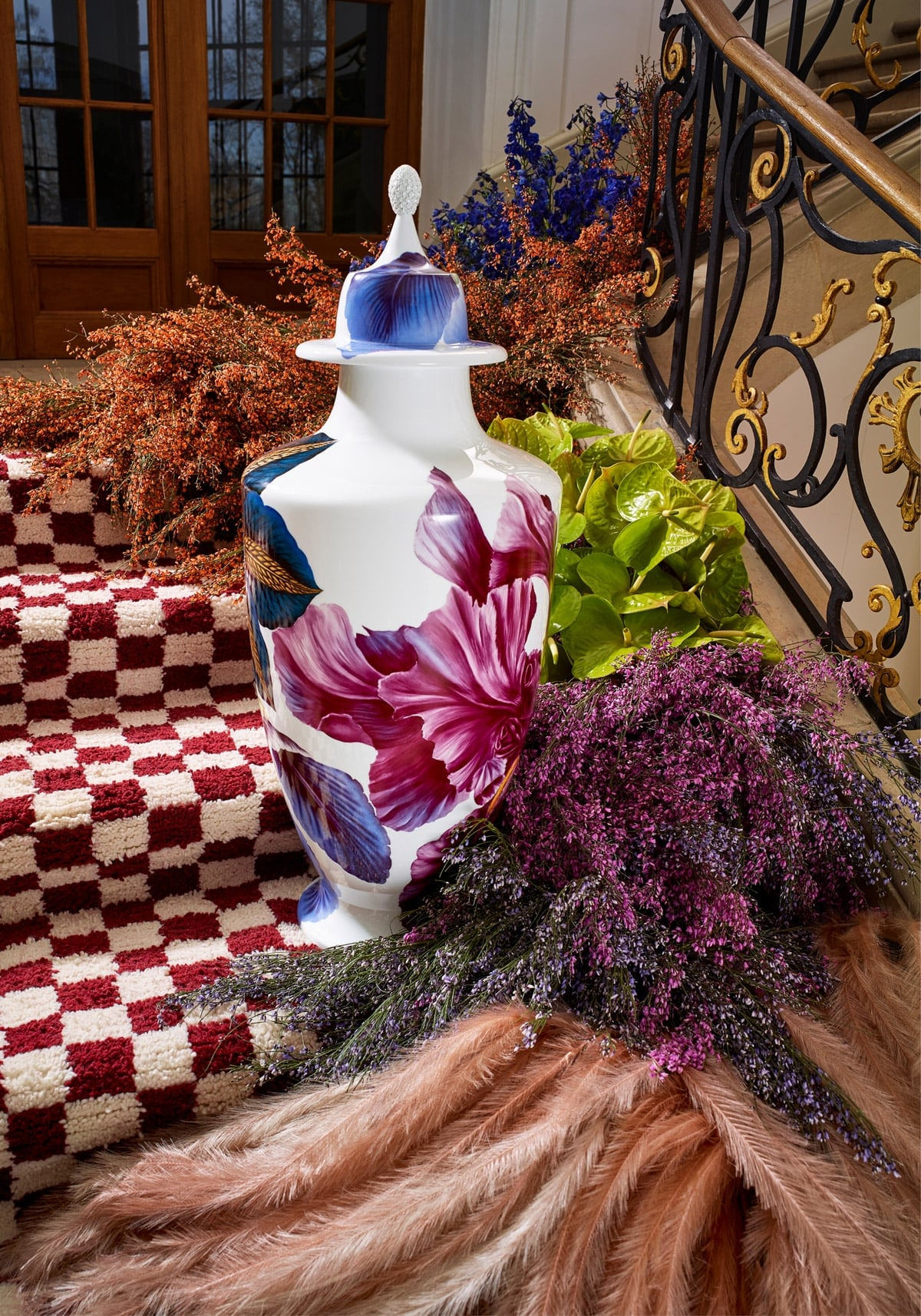 Limited MasterworksThe collection presents historic reissues of exceptional pieces by great artists who have shaped the manufactory over centuries. In 2018: Ernst August Leuteritz, Max Adolf Pfeiffer and Jörg Danielczyk
Limited MasterworksThe collection presents historic reissues of exceptional pieces by great artists who have shaped the manufactory over centuries. In 2018: Ernst August Leuteritz, Max Adolf Pfeiffer and Jörg Danielczyk -
02
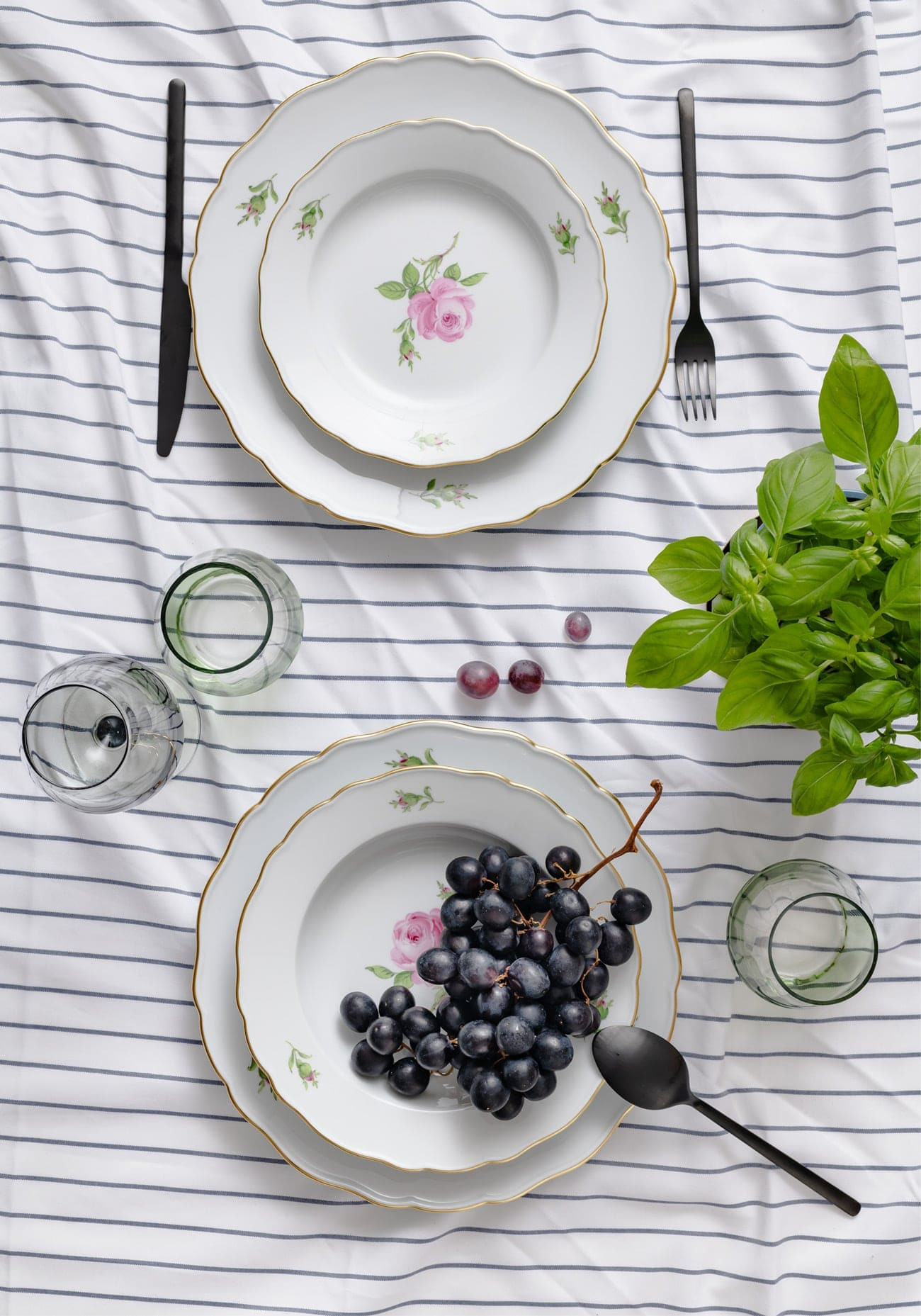 MEISSEN RoseBased on the vivid still life paintings by Dresden painter Georg Friedrich Kerstings, the graceful "MEISSEN Rose" is a testament to Biedermeier era creativity
MEISSEN RoseBased on the vivid still life paintings by Dresden painter Georg Friedrich Kerstings, the graceful "MEISSEN Rose" is a testament to Biedermeier era creativity





